Crispy Tangsuyuk – Korean Sweet & Sour Pork
Today, let’s make extra crispy Korean sweet and sour pork, Tangsuyuk! This is a recipe I’ve settled on after trying several versions from Korean-Chinese restaurant chefs. You don’t have to go to Korea to enjoy this dish – with this recipe you can make super crispy and delicious tangsuyuk right at home.
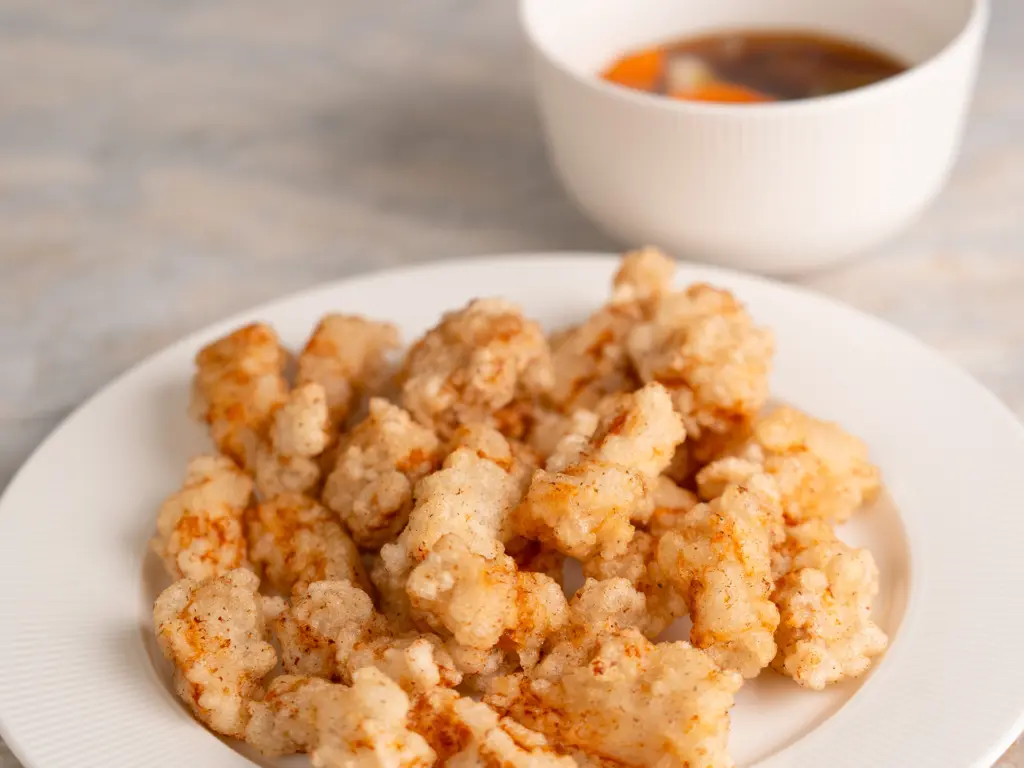
What is Tangsuyuk?
Tangsuyuk is one of the most iconic dishes in Korean-style Chinese cuisine. It’s made by coating strips of pork in a light batter, deep-frying them until crispy, and serving them with a sweet and tangy sauce. The sauce usually includes vegetables such as cucumber and onion, which add a crunchy texture and vibrant color to the dish.
Although inspired by Chinese cuisine, tangsuyuk has evolved into a uniquely Korean dish – in fact, you won’t find this exact version in China. Let’s dive deeper below!
No Tangsuyuk in China?
Tangsuyuk is a Korean-style Chinese dish, but you won’t actually find it in China. Many dishes in Korean-Chinese cuisine were developed by Chinese immigrants (hwagyo) who adapted traditional Chinese recipes to suit Korean tastes.
Korean sweet and sour pork is believed to have evolved from a Chinese dish called Tang Cu Li Ji – a sweet and sour pork dish found in regions such as Beijing and Shandong. Tang Cu Li Ji uses lean cuts of pork, such as tenderloin or loin, which are sliced into strips, coated with starch, deep-fried, and stir-fried in a sweet and sour sauce. Unlike tangsuyuk, however, it does not include vegetables such as onions, cucumbers, or carrots.
Another important difference is how the sauce is served. In China, the pork is stir-fried with the sauce and served immediately. But in Korea, unless you’re in a traditional Chinese restaurant, Korean sweet and sour pork is usually served with the sauce separately. This practice began with Korea’s takeout culture – by keeping the sauce on the side, the crispy texture of the fried pork is preserved for longer during takeout.
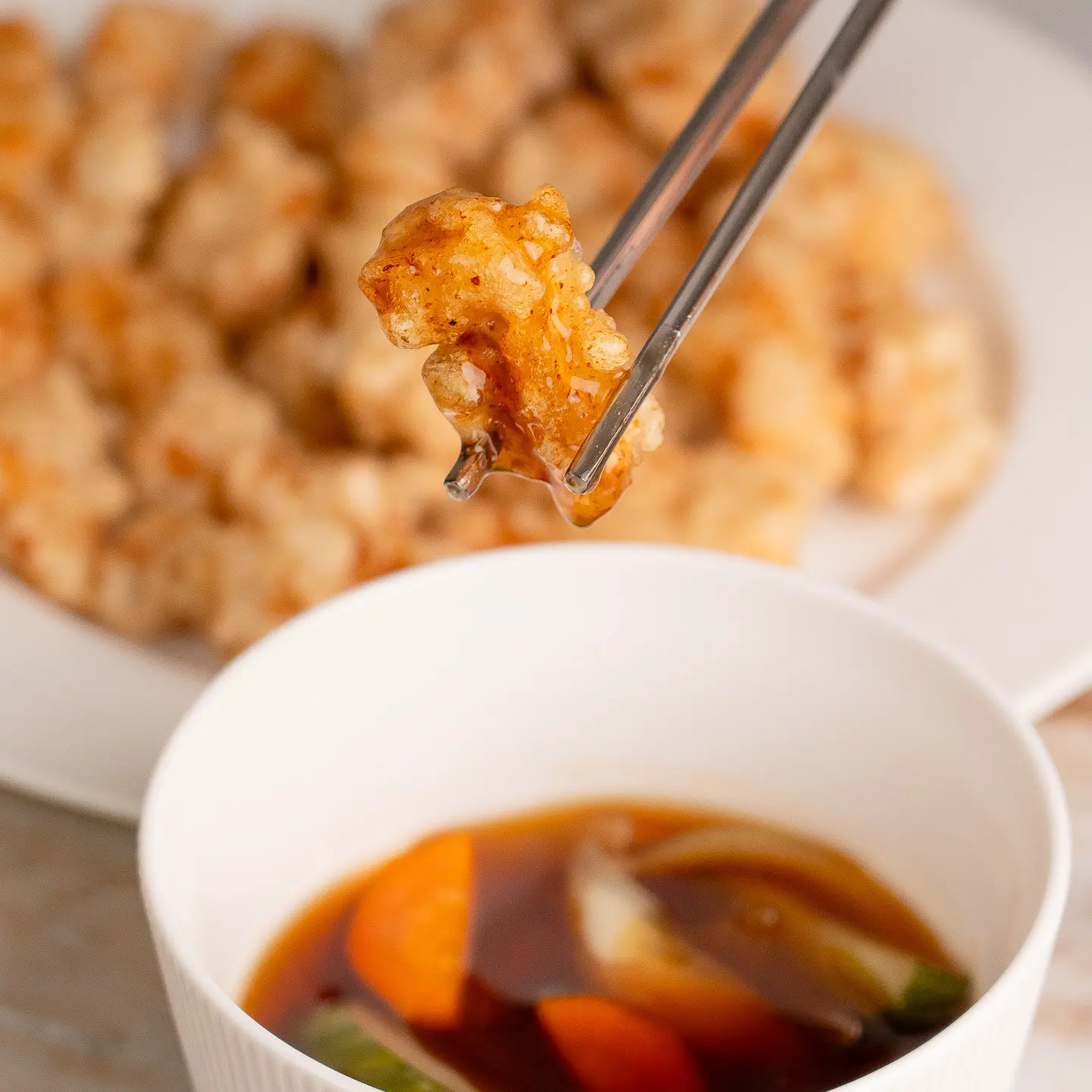
Ingredients for Tangsuyuk (Korean Sweet and Sour Pork)
What is Korean sweet sour pork made of? It’s simpler than you think!
- Pork: Lean cuts like loin or tenderloin are typically used.
- Potato starch: The secret to that ultra-crispy coating.
- Cooking oil & egg white: Key ingredients for a crispy and slightly chewy texture.
- Cucumber, carrot, onion: These vegetables go into the tangsuyuk sauce. Some Korean-Chinese restaurants also add wood ear mushrooms or canned fruit for extra texture and flavor.
- Soy sauce, sugar, vinegar: The essential trio that creates the tangy, sweet, and savory sauce. In the past, many Korean snack bars added ketchup to their tangsuyuk sauce, but that trend is fading. A final touch is thickening the sauce slightly with a starch slurry, giving it a glossy, smooth finish.
Best Tips for Extra Crispy Tangsuyuk
Potato starch only!
If you’ve used flour or tempura mix for tangsuyuk, you’re making a big mistake. Korean-Chinese restaurants use potato starch to get the signature crunch. Some places mix different starches like potato and sweet potato starch to add both crunch and chewiness – but at home, just potato starch is enough to nail the texture.
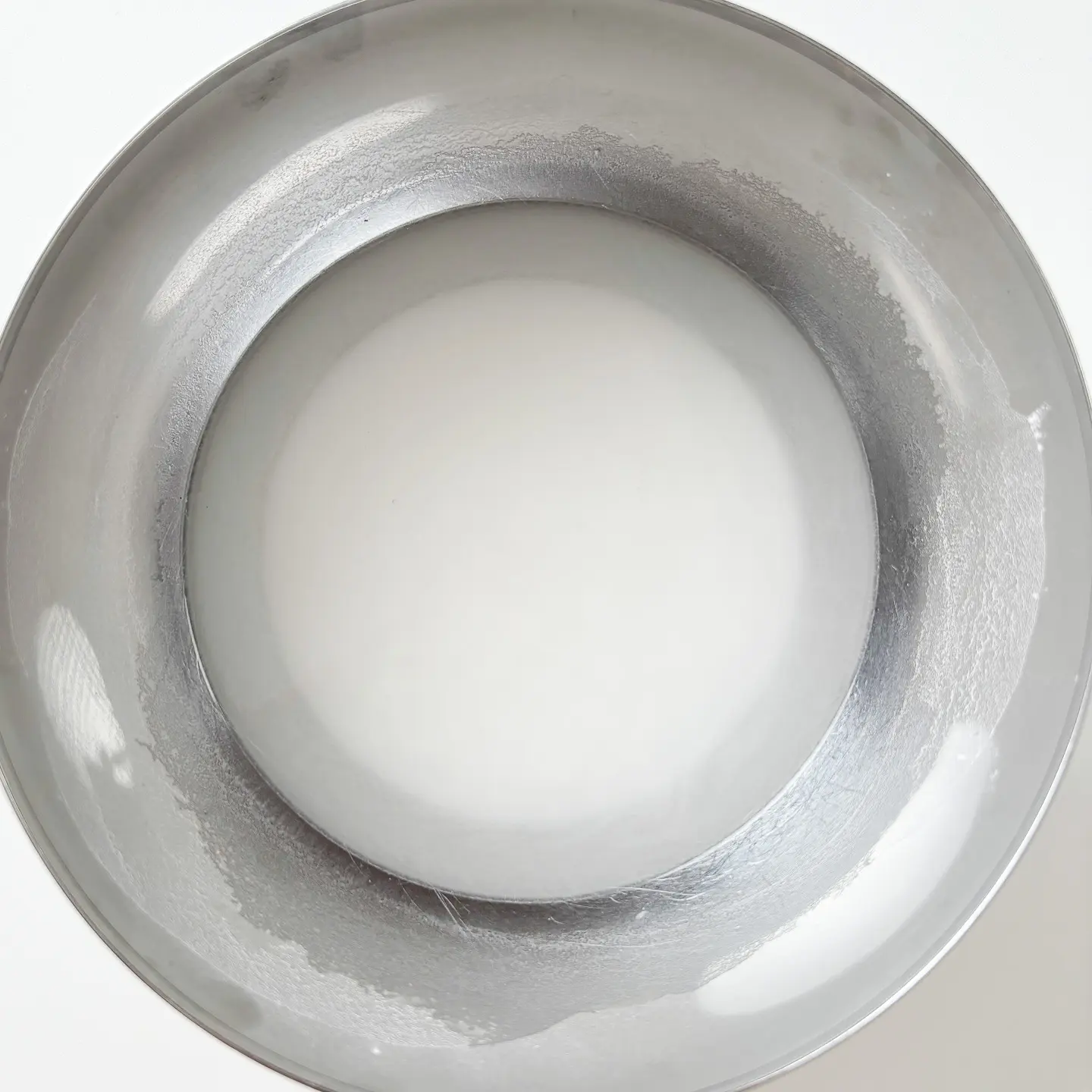
Water separation method
After mixing potato starch with water, let it sit for about 20 minutes. The starch will sink to the bottom — pour out the water and use only the settled starch paste. That’s the golden part.
Oil in the batter
Add a bit of cooking oil to loosen the batter. It helps create a smooth, glossy texture that fries up beautifully.
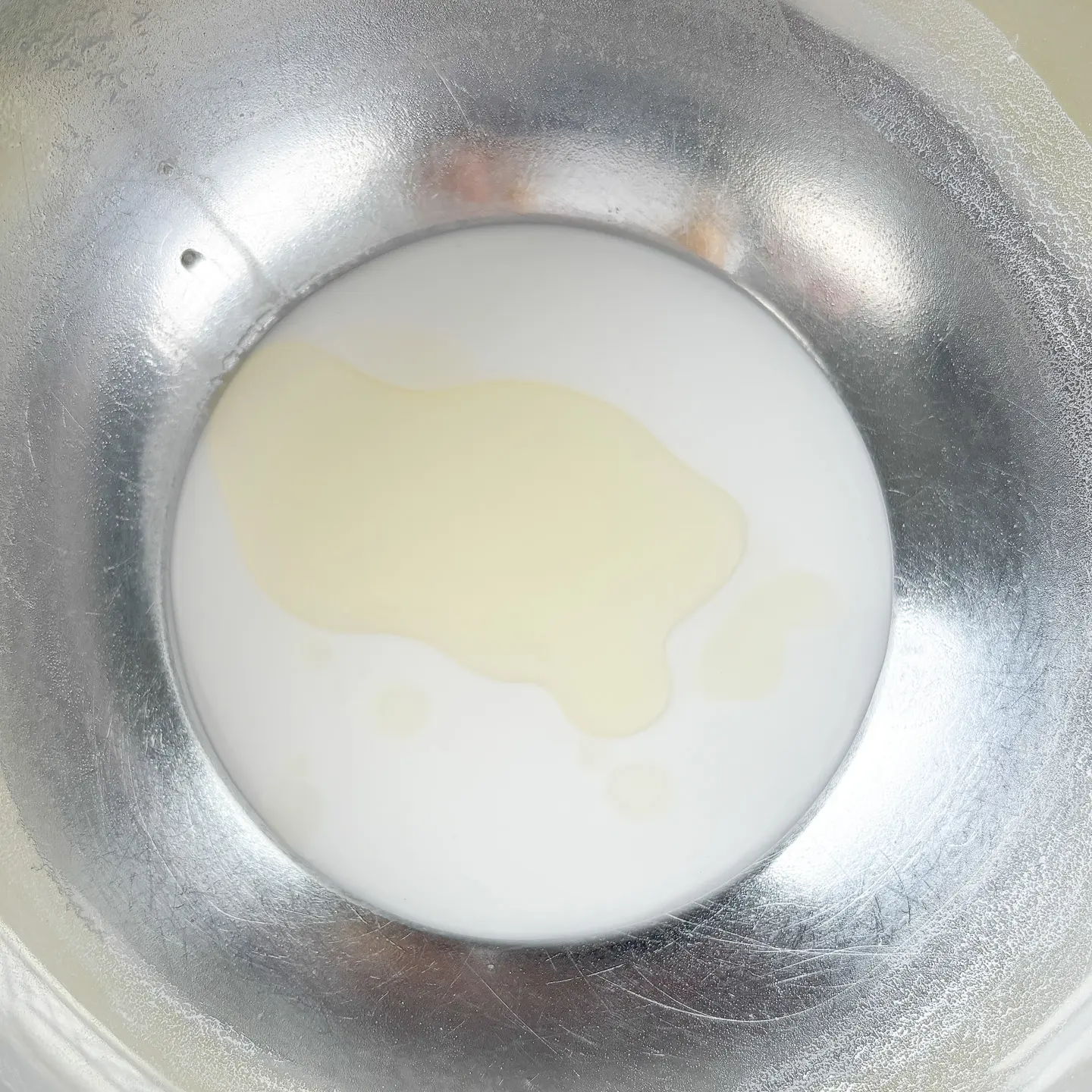
Egg white (just a little!)
Too much egg white will make the coating soggy. Add just enough — I used half an egg white for today’s recipe.
Double-fry
Just like Korean fried chicken, tangsuyuk turns extra crispy when you fry it twice. The second fry drives out moisture and makes the coating super crunchy.
How to Fry Tangsuyuk Extra Crispy
Want that loud crunch when you bite into sweet sour pork? Here’s how to get it.
- Fry with A Mesh Strainer
When frying, gently agitate the pork pieces using a mesh strainer. This helps the surface rub against the oil, creating that extra crispy texture.
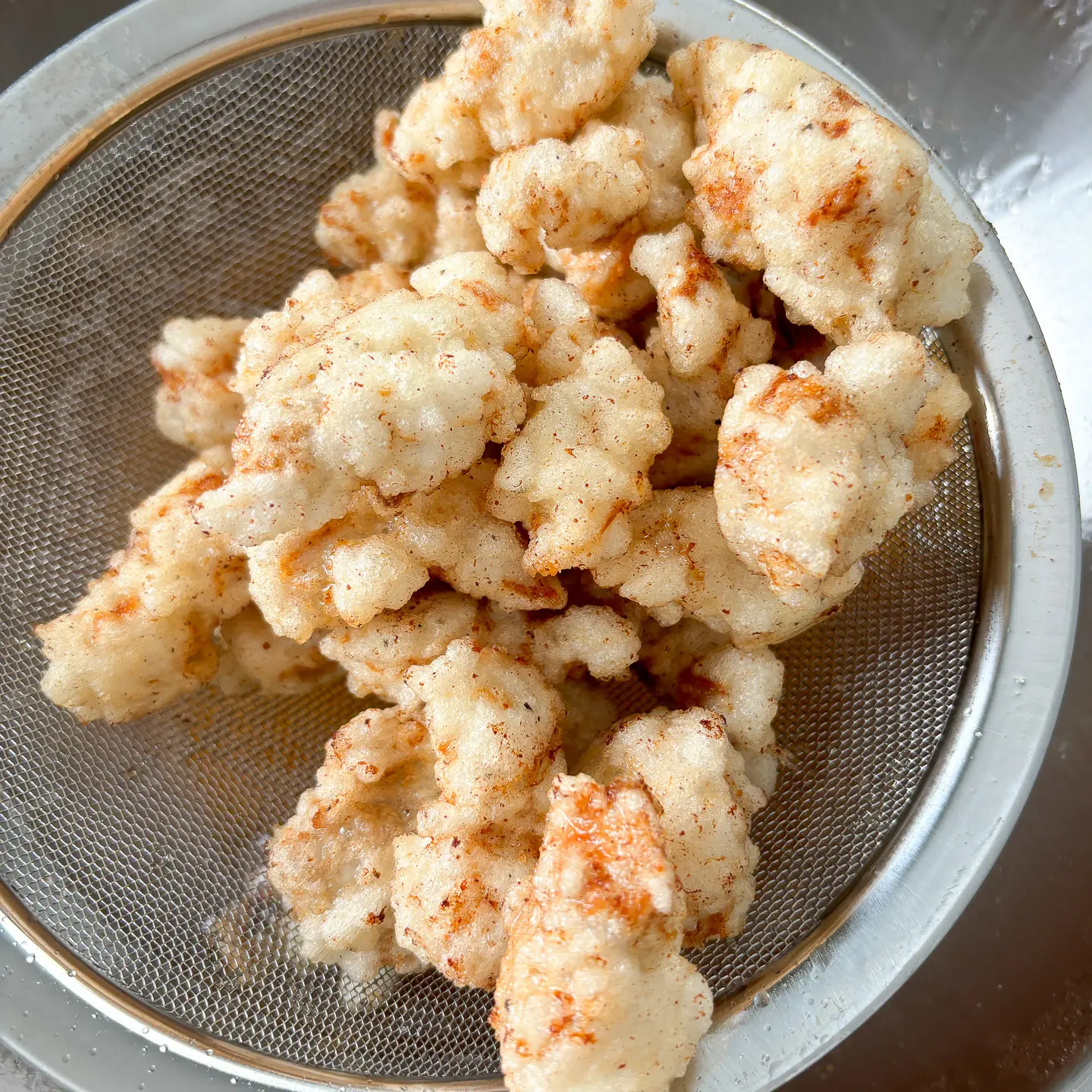
- Double Fry
After the first fry, raise the oil temperature and fry again for 1 more minute. This second fry removes moisture and adds a shatteringly crisp finish — just like Korean fried chicken.
- Drain The Oil
Once the pieces are fried, tap the strainer to shake off excess oil. Let them rest on the strainer for a bit to drain completely before serving. No soggy pieces here!
Perfect Tangsuyuk Sauce
The beauty of Korean sweet sour pork lies in its sweet, tangy, and salty sauce. Finding the right balance is everything — and today’s sweet and sour sauce recipe nails it.
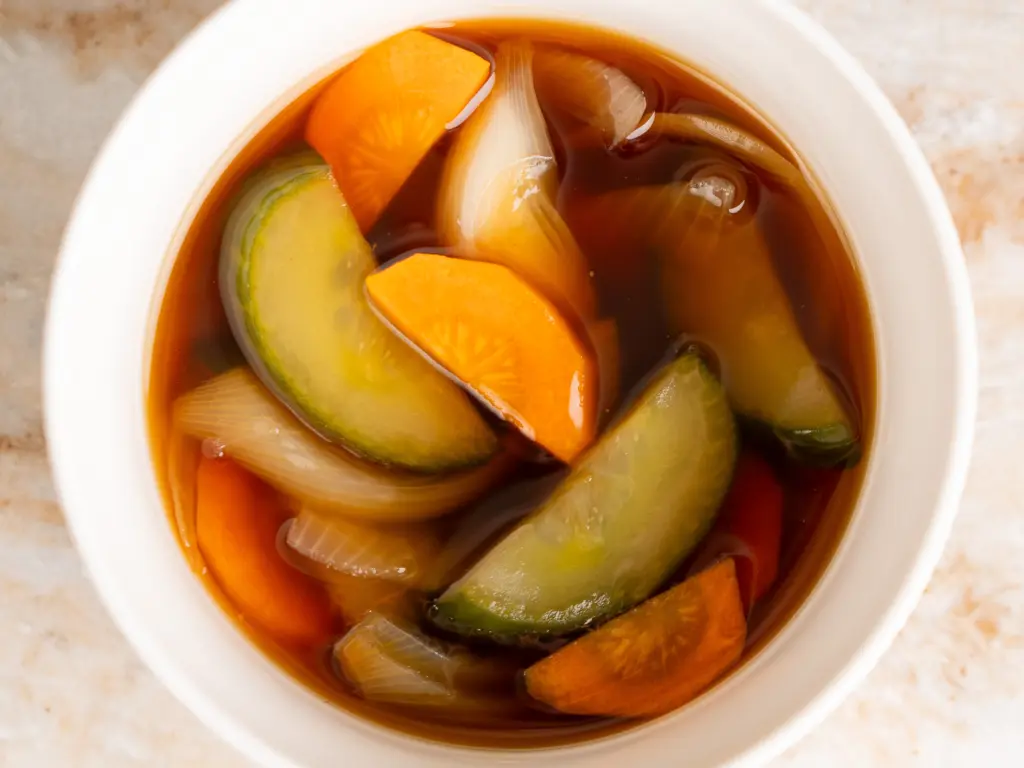
Texture matters
The sauce shouldn’t be too runny or too thick. To get that perfect consistency, slowly stir in a starch-water mixture while the sauce is simmering. Don’t pour it all at once — go little by little until the texture looks just right.
Veggies and fruit
Today, I used cucumber, carrot, and onion — the classic combo. Some Korean-Chinese restaurants add wood ear mushrooms or even bell peppers. Old-school versions sometimes include canned fruit for an extra pop of sweetness and tang.
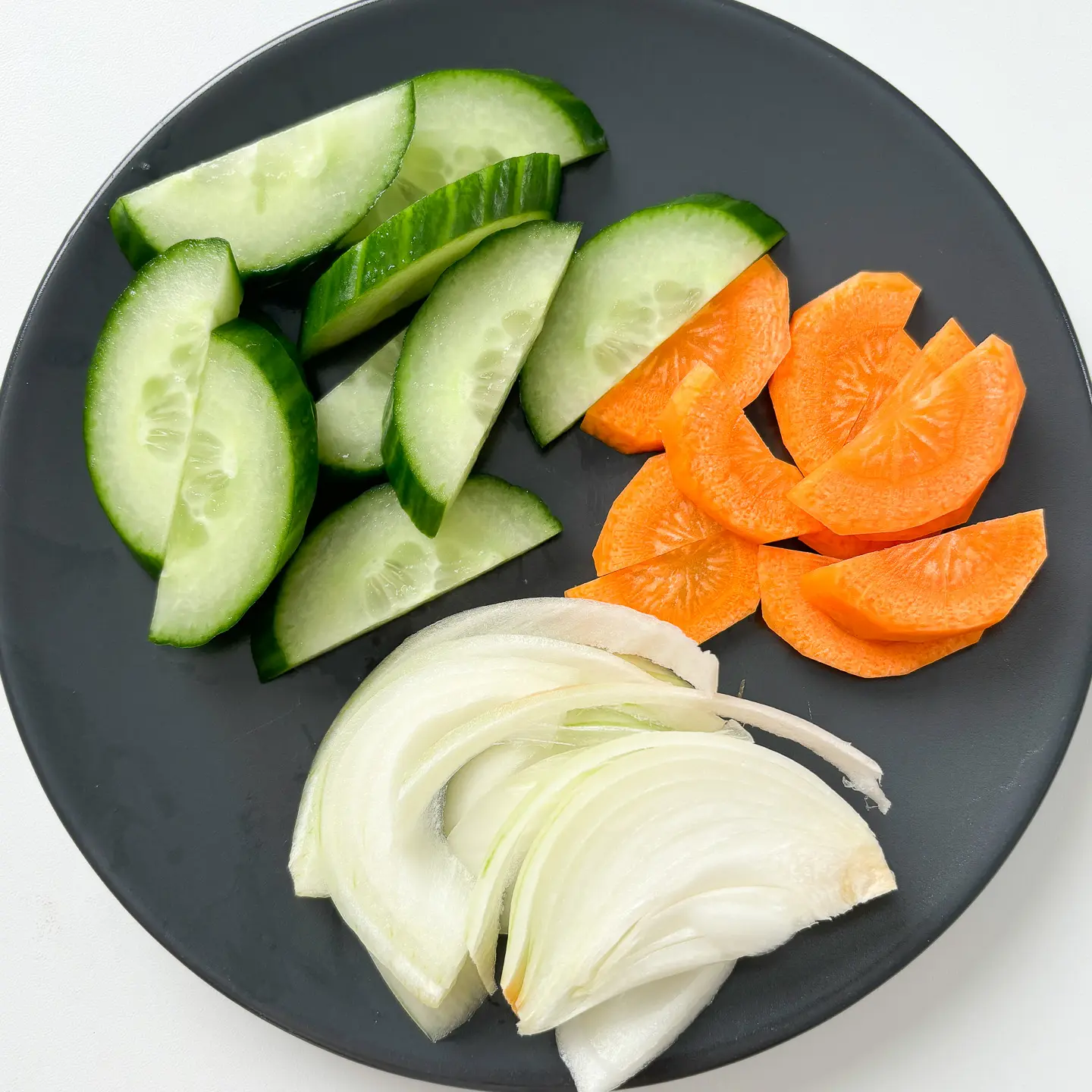
2 Ways to eat Tangsuyuk?
Bumuk vs Jjikmuk
Do you pour the sauce or dip your tangsuyuk Korean sweet and sour pork? In Korea, this is a surprisingly serious debate — and yes, it could even start a fight with your Korean friend! Many Koreans fall into two camps: Bumuk (pour-over) and Jjikmuk (dip-in).
This fun food rivalry actually comes from Korea’s delivery culture. It’s kind of like the UK’s scone debate — do you spread cream first or jam first? Let’s break down both sides.
Team Bumuk (pour-over)
- Pouring the sauce is the traditional way
- The sauce soaks into the crispy pork, giving it more flavor and a richer sweet & sour punch.
- It’s more convenient — no dipping every bite!
- Fried food gets soggy eventually anyway, so why not embrace the flavor from the start?
Team Jjikmuk (dip-in)
- Keeps the batter super crispy till the last bite.
- “Why bother frying it if it’s going to get soggy?”
- You can control how much sauce you want on each piece.
- Great for leftovers — undrenched tangsuyuk stays crispy and reheats better the next day.
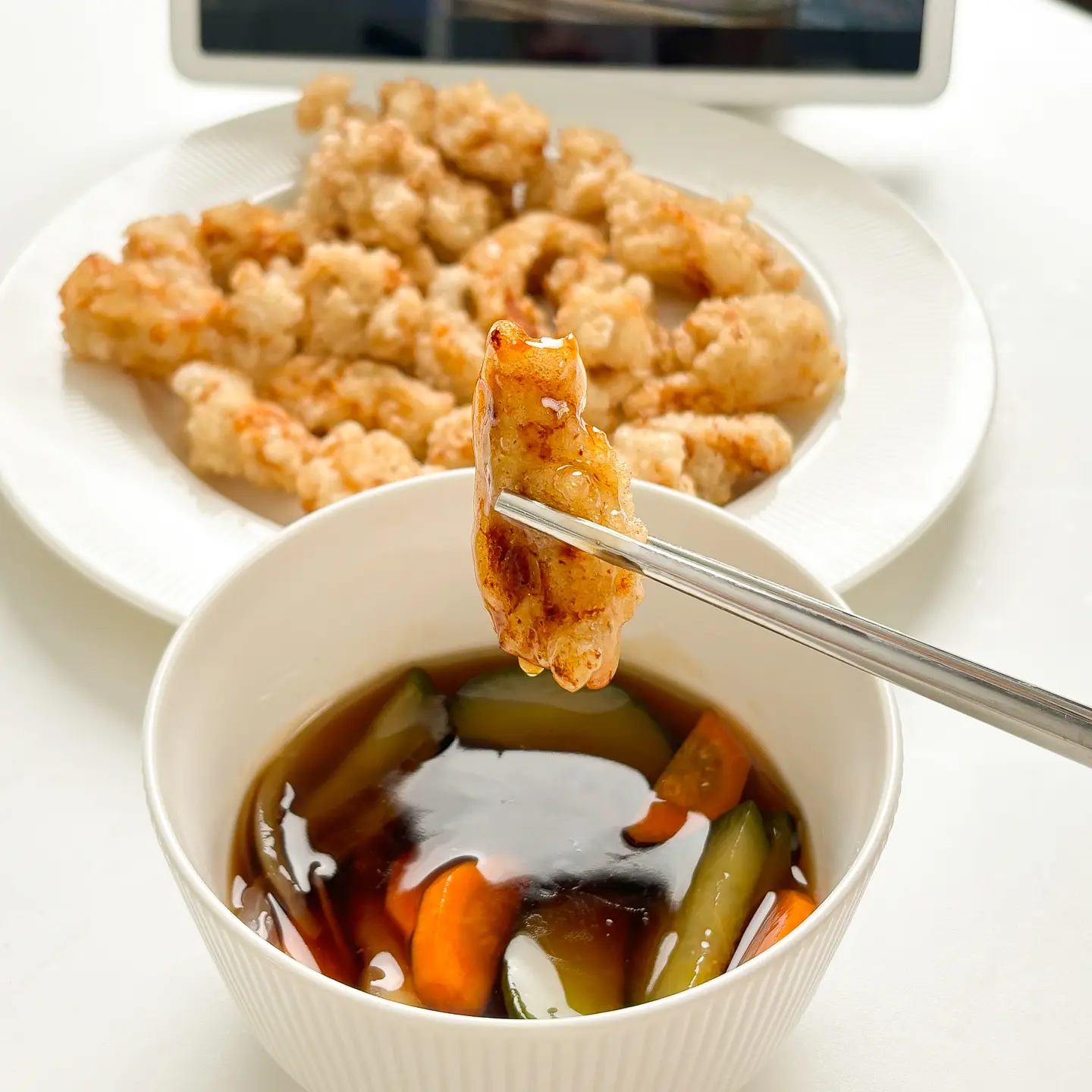
So! are you Team Bumuk or Team Jjikmuk?
Korean Chinese Food
Korea has its own style of Korean Chinese food that’s completely unique — and incredibly popular! Today, I’m going to share 5 must-try Korean Chinese dishes that pair perfectly with tangsuyuk (Korean sweet & sour pork).
These are the top 5 menu items you’ll find at almost every Korean Chinese restaurant.
- Jjajangmyeon (짜장면)
This is the most iconic Korean Chinese dish. It’s made with thick Chinese-style noodles topped with a rich black bean sauce called chunjang. The sauce is packed with diced pork, onions, and veggies — savory, slightly sweet, and full of flavor.
Tangsuyuk and jajangmyeon are a classic combo. Most people order one jjajangmyeon per person and share one Korean sweet and sour pork as a side.

Can’t Find Korean-Chinese Restaurants Near You? Try Chapagetti!
If it’s hard to find Korean-style Chinese food like jajangmyeon where you live, don’t worry—grab a pack of Jjapagetti!
This is a super popular Korean recipe called chagyechi (short for Chapagetti + Egg + Cheese) that makes it unbelievably delicious. Once you try it this way, you might never go back to plain instant noodles again.
Chagyechi – The Ultimate Chapagetti with Egg & Cheese
- Jjamppong (짬뽕)
This dish always makes it hard to choose between jjajangmyeon and jjamppong! It’s a spicy seafood noodle soup with a deep, flavorful broth made from seafood or meat. It usually comes loaded with squid, shrimp, and vegetables. In Korea, it’s common for two people to order one jjajangmyeon and one jjamppong to share.
- Tangsuyuk (탕수육)
This is the sweet and sour pork we’re making today — crispy deep-fried pork with a tangy sauce. Tangsuyuk comes in small, medium, and large sizes and is meant to be shared. In the West, people usually order one main dish per person, but in Korea, it’s common to order a noodle dish and share Korean sweet and sour pork as a side.
- Bokkeumbap (볶음밥)
This Korean-style fried rice is a staple on every Korean Chinese menu. It’s made with egg, scallions, and rice stir-fried over high heat for that signature smoky flavor. Most Korean Chinese restaurants serve it with a side of jjajang sauce. Try scooping a spoonful of fried rice and dipping it into the sauce — it’s unforgettable!
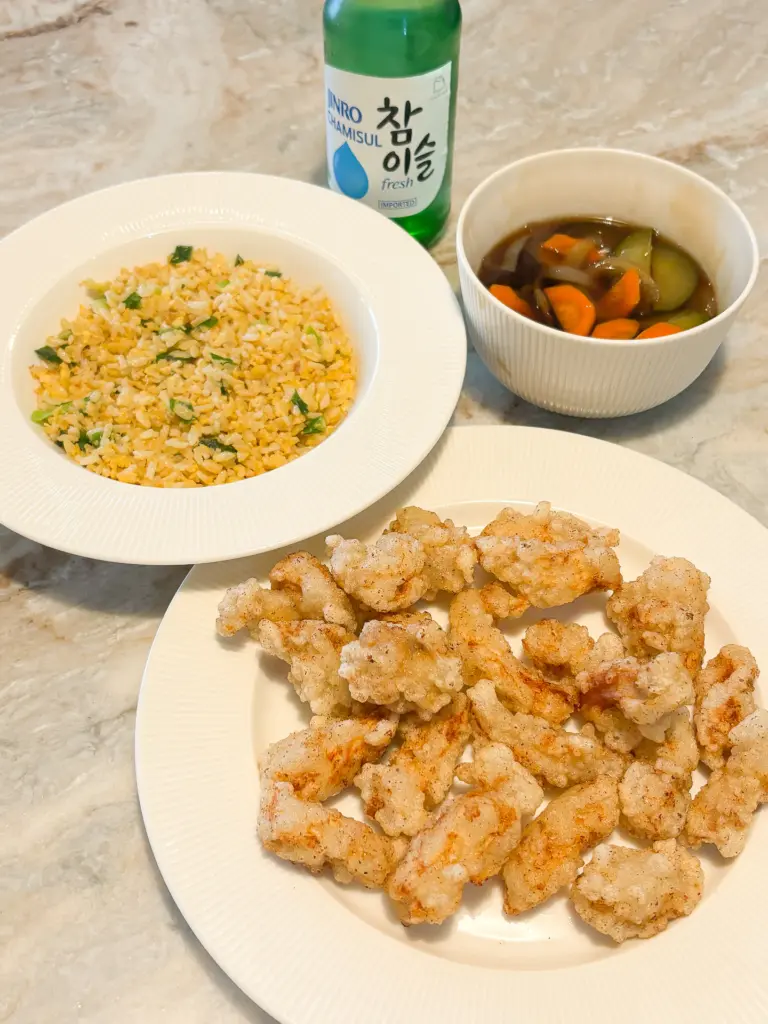
You can make the fried rice in this photo in just 5 minutes with only eggs and rice.
This is that insanely delicious egg fried rice recipe.
5 Min Korean Golden Egg Fried Rice – Quick & Easy
- Gunmandu (군만두)
These crispy fried dumplings are the go-to side dish. Filled with seasoned meat and veggies, they’re golden on the outside and juicy inside. Koreans usually dip them in soy sauce — but some like to dip them in tangsuyuk sauce or even jjajang sauce for a fun twist. It’s so good!
Reheating Tips
Got leftover tangsuyuk? Whatever you do, don’t microwave it! It’ll turn soggy and dry. Here’s how to enjoy that same crispy texture even the next day.
- Air Fryer Method
Set your air fryer to 180°C (356°F) and cook the tangsuyuk for about 10 minutes. Flip the pieces halfway through to make sure they get crispy all over. It’ll taste just like it did yesterday!
- Oil Fry Method
Re-frying in hot oil is another great option. Just a quick fry brings back that crunchy texture and rich flavor.
- Reheating the Sauce
1. Add about 4 tablespoons of water and simmer it gently over low heat in a small pot.
2. If you’re using a microwave, also add 4 tablespoons of water, cover the bowl with plastic wrap, and poke a few holes in it. Heat for less than 30 seconds to avoid drying it out.
Tip: Microwave heating can make the sauce too thick, so gently reheating on the stovetop is usually best.
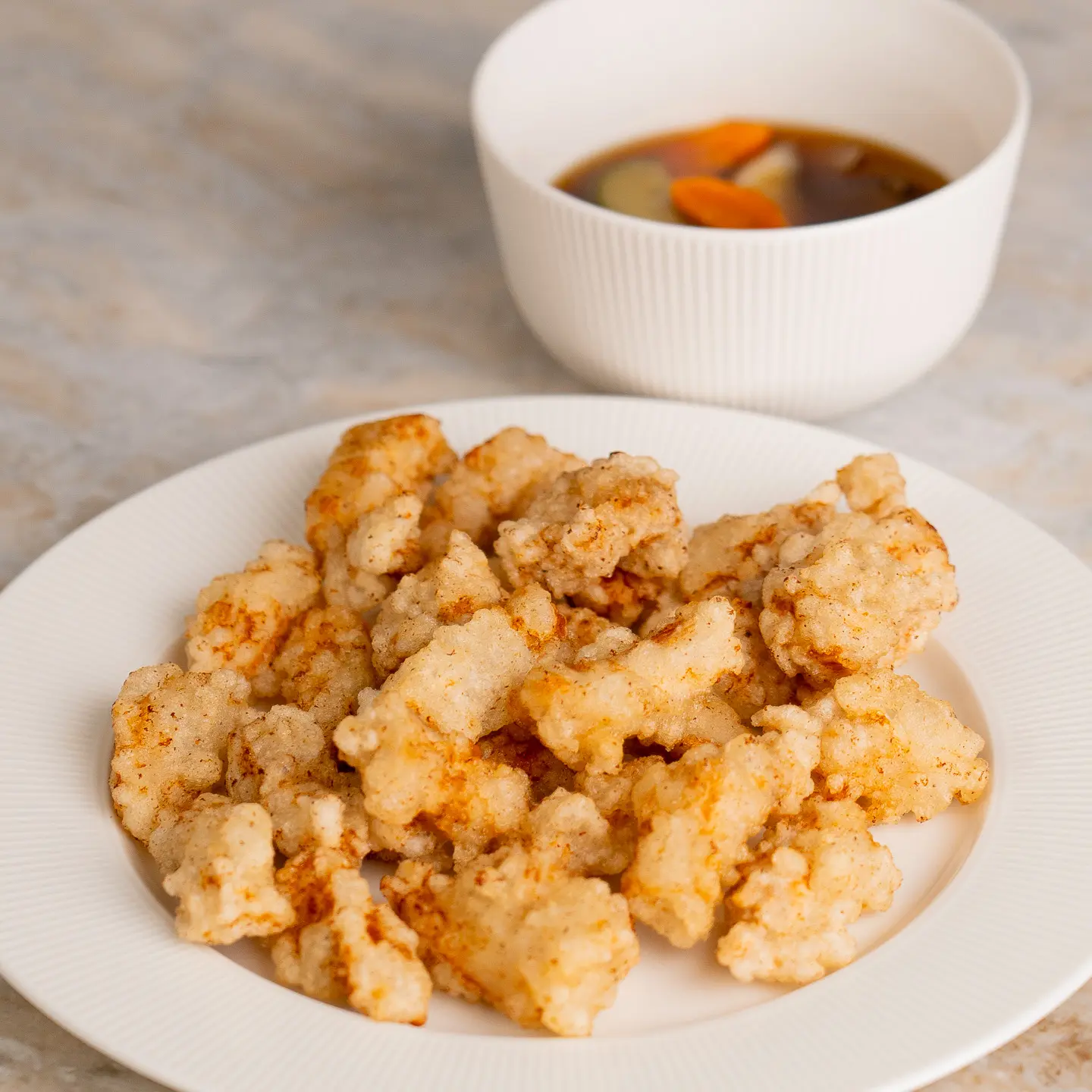
Recommended Side Dishes
Here are some classic Korean-Chinese side dishes that go perfectly with Korean sweet and sour pork.
- Pickled Radish (Danmuji): This is a must-have side dish at any Korean-Chinese restaurant. Its sweet and tangy flavor helps cut through the richness of fried dishes, making it the perfect match for Korean sweet sour pork.
- Pickled Mustard Stems (Zha Cai / Jjashaai): Many Korean-Chinese places also serve this savory and slightly spicy preserved vegetable. It’s crunchy, salty, and has a mild heat that pairs well with oily or fried foods like sweet and sour pork.
Get Ingredients Here
- A Deep Frying Pan (Wok): US
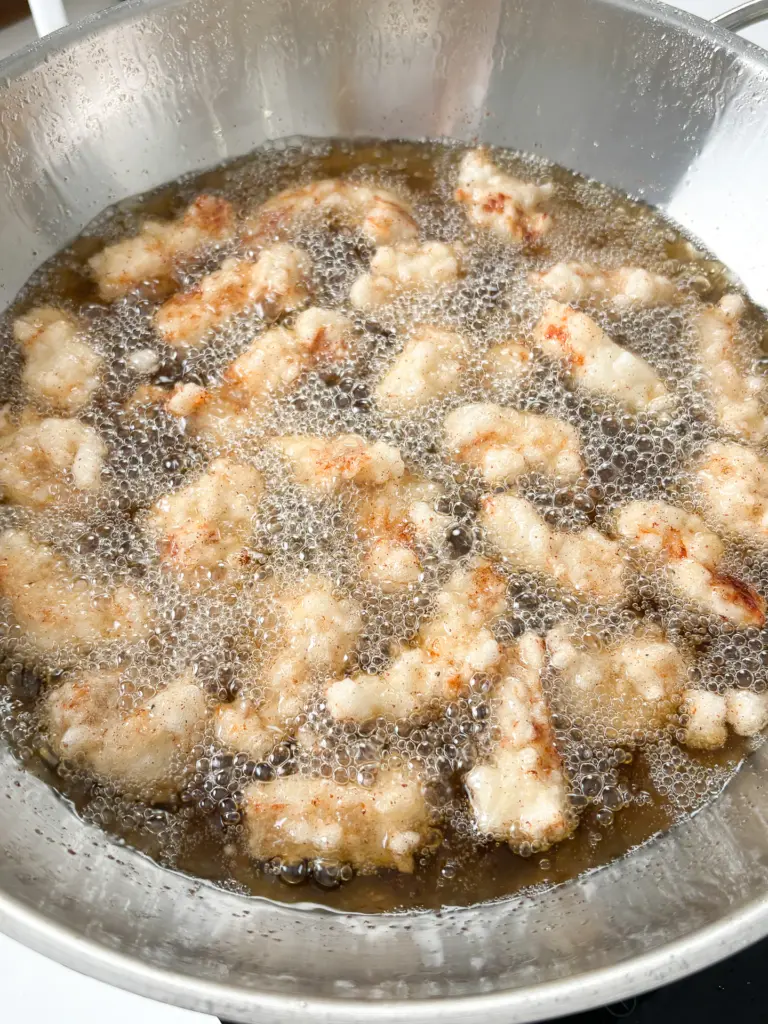
FAQs about Tangsuyuk
What is tangsuyuk made of?
Tangsuyuk is made with lean cuts of pork, such as loin or tenderloin, coated with crispy potato starch and deep-fried. It’s served with a sweet and sour sauce made mainly with soy sauce, sugar, and vinegar.
What dipping sauce goes with tangsuyuk?
It’s sweet and sour sauce. The base is soy sauce, sugar, and vinegar, giving it a tangy and sweet flavor with a hint of soy aroma. Some versions add fruit cocktail, while others keep it simple with cucumber, onion, and carrot.
What does tangsuyuk taste like?
When you bite into the extra-crispy coating, you get juicy pork inside. The sweet and sour sauce lightly soaks into the batter, refreshing the oiliness and creating a perfectly balanced flavor.
What to eat tangsuyuk with?
In Korean-Chinese restaurants, tangsuyuk is usually ordered as a side dish with jjajangmyeon or jjamppong. Adding fried dumplings and dipping them into the tangsuyuk sauce makes it even more delicious.
How to reheat tangsuyuk in an air fryer?
Cook it in the air fryer at 180°C (355°F) for 5–10 minutes to make it crispy again, just like the day before. Since air fryer models differ, adjust the time to avoid burning.
Can I make sweet and sour sauce without pineapple?
Of course. Pineapple is optional, and many Korean-Chinese restaurants don’t use it.
How to make sweet and sour pork crispy?
Use potato starch. Let potato starch sit in water, then use the settled starch for the coating. This method ensures maximum crispiness. (You can find the full recipe on today’s blog post!)
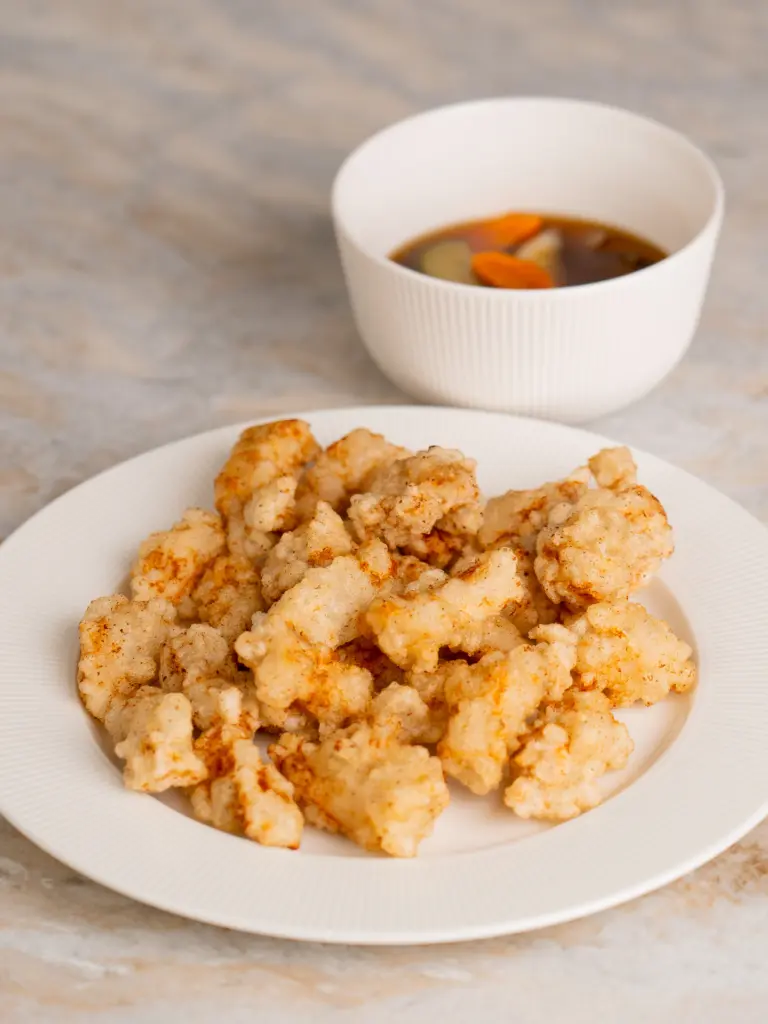
Crispy Tangsuyuk – Korean Sweet & Sour Pork
Equipment
Ingredients
pork
- 300 g pork lion or tenderloin
- 1 pinch salt
- 1 pinch MSG
- 5 turns black pepper
Starch Batter
- 1 cup potato starch
- 1 cup water
- 4 tbsp cooking oil (plus more if needed)
- 1/2 egg white
Tangsuyuk Sacue
- 180 ml water
- 2 tbsp Korean soy sauce
- 3 tbsp vinegar
- 3.5 tbsp sugar
- 30 g cucumber
- 30 g carrot
- 30 g onion
Thickener (Slurry)
- 3 tbsp water
- 1 tbsp potato starch
Instructions
- Mix 1 cup of potato starch with 1 cup of water and let it sit for 20 minutes until the starch settles at the bottom. Carefully pour out the water, keeping only the starch layer.1 cup potato starch, 1 cup water

- Slice the pork into pieces about 1cm thick and 4cm long. Season with salt, MSG (if using), and pepper.300 g pork lion or tenderloin, 1 pinch salt, 1 pinch MSG, 5 turns black pepper

- Cut the vegetables for the sauce, slice the cucumber, carrot, and onion into thin pieces.30 g cucumber, 30 g carrot, 30 g onion
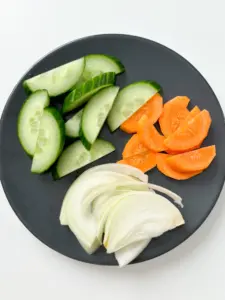
- To the settled starch, add 4 tbsp cooking oil and 1/2 egg white. Mix until it reaches a mayonnaise-like consistency. If needed, add a bit more oil to adjust the thickness. Check the thickness in the Youtube video.4 tbsp cooking oil, 1/2 egg white
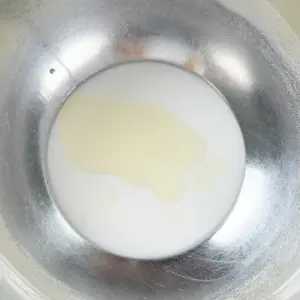
- Add the pork to the starch batter and coat well.

- Heat oil to 180°C (355°F). Using your hands, clump the battered pork and drop into the hot oil. Fry for about 5 minutes.
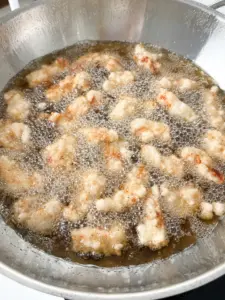
- After 1 minute, gently separate any pieces that are sticking together.
- Once done, remove from the oil and fry a second time for extra crispiness.
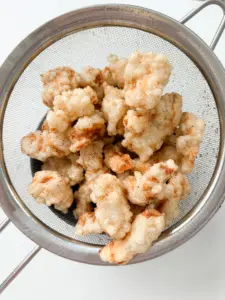
- To make the sauce, combine water, soy sauce, vinegar, and sugar in a pan. Bring to a boil, then add the vegetables.180 ml water, 2 tbsp Korean soy sauce, 3 tbsp vinegar, 3.5 tbsp sugar

- Add the starch slurry (3 tbsp water + 1 tbsp potato starch) a little at a time while stirring, until the sauce thickens to your desired consistency.3 tbsp water, 1 tbsp potato starch
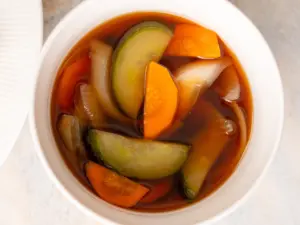
Crispy Korean Sweet Sour Pork
- Tangsuyuk 탕수육
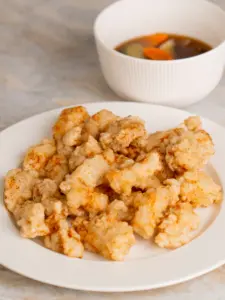
- 잘 먹겠습니다! Jal meokgetseumnida!
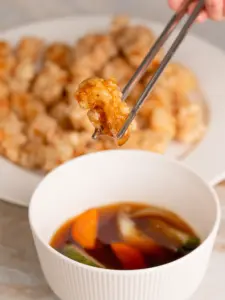
- Are you gonna pour the sauce or dip it in the sauce?
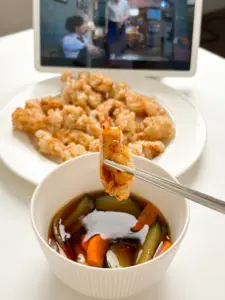

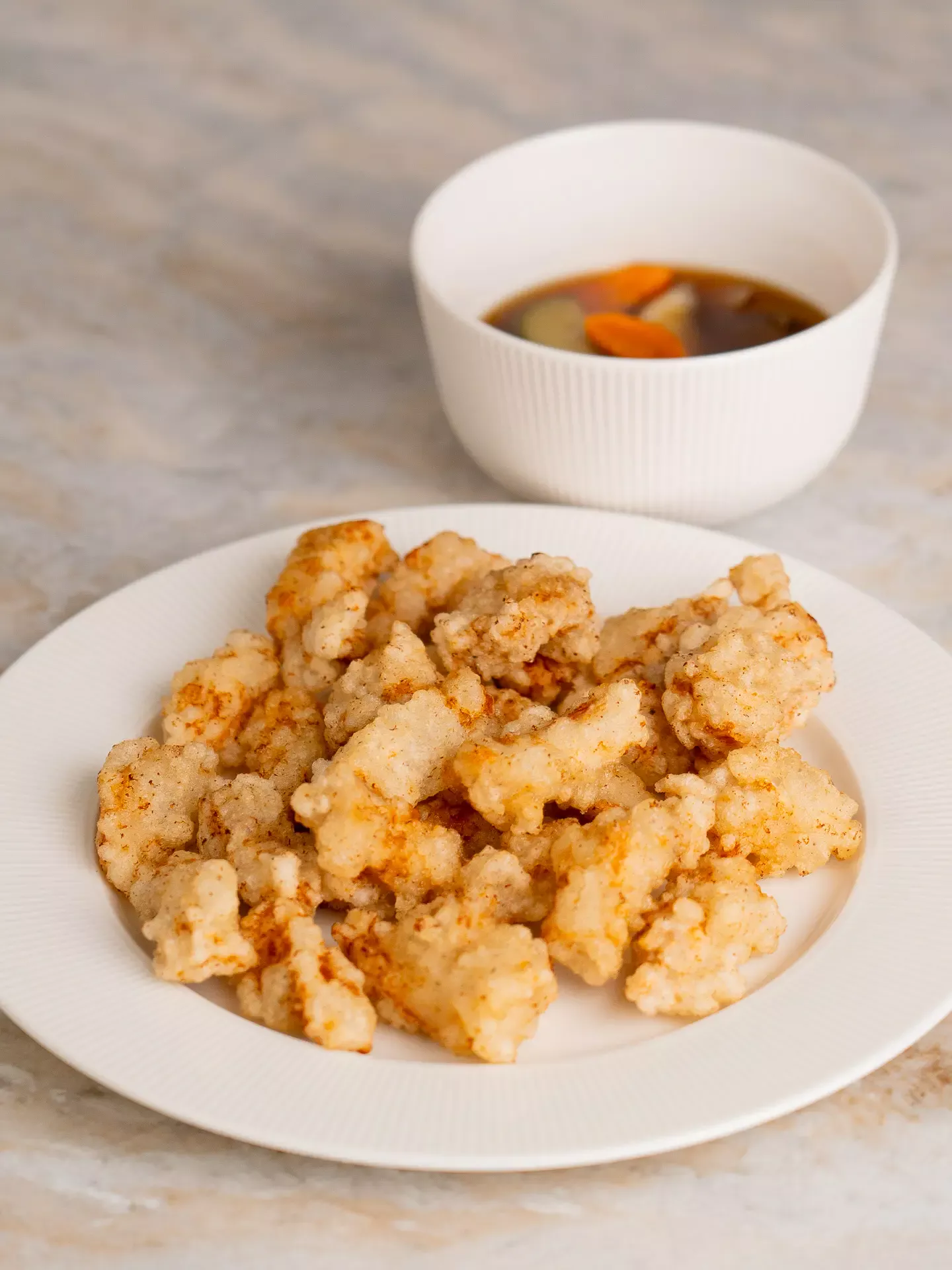

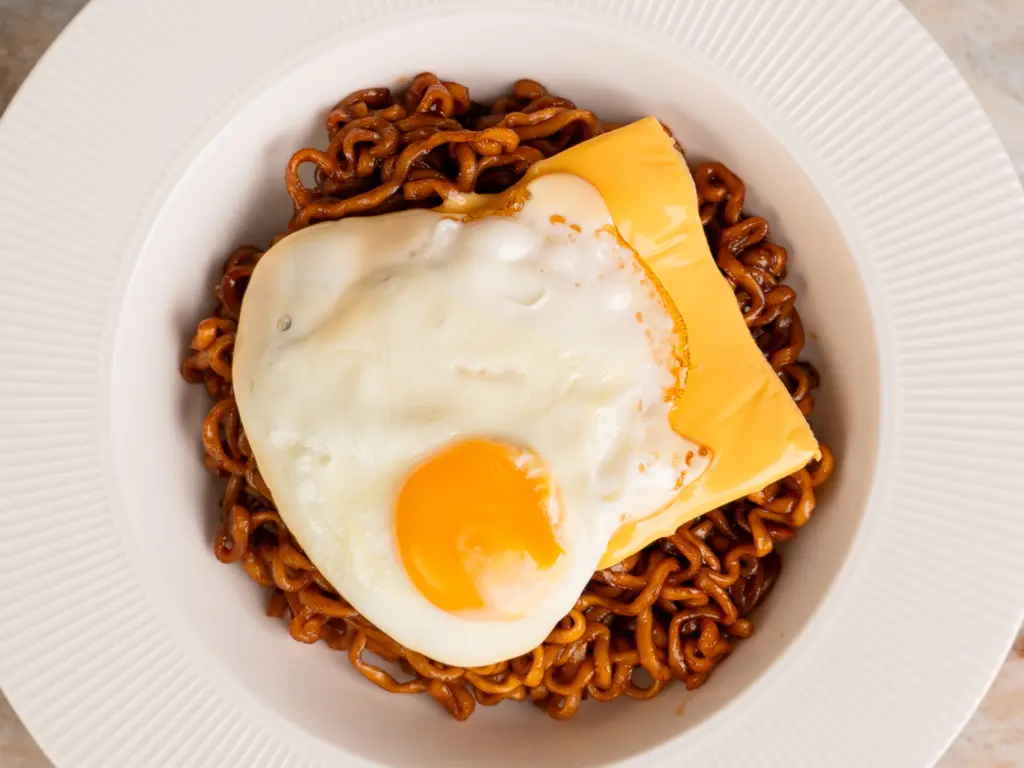
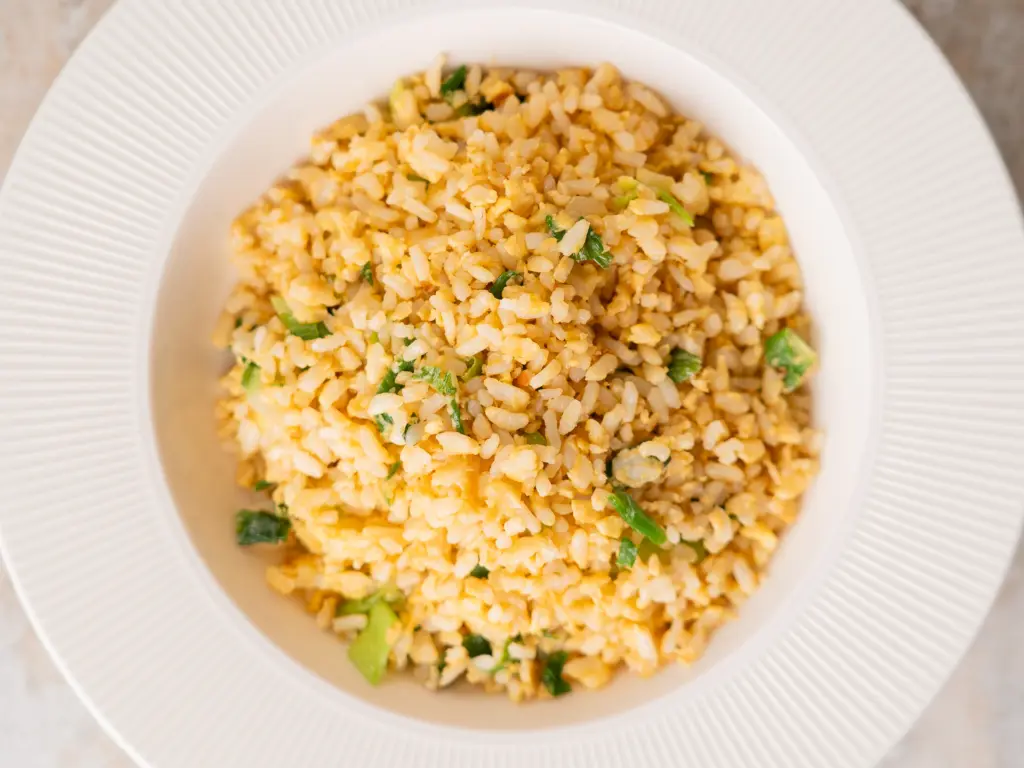






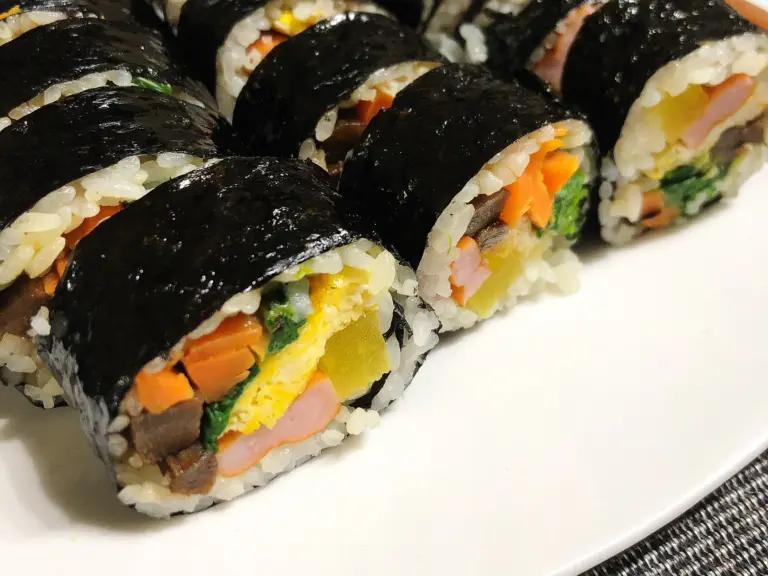

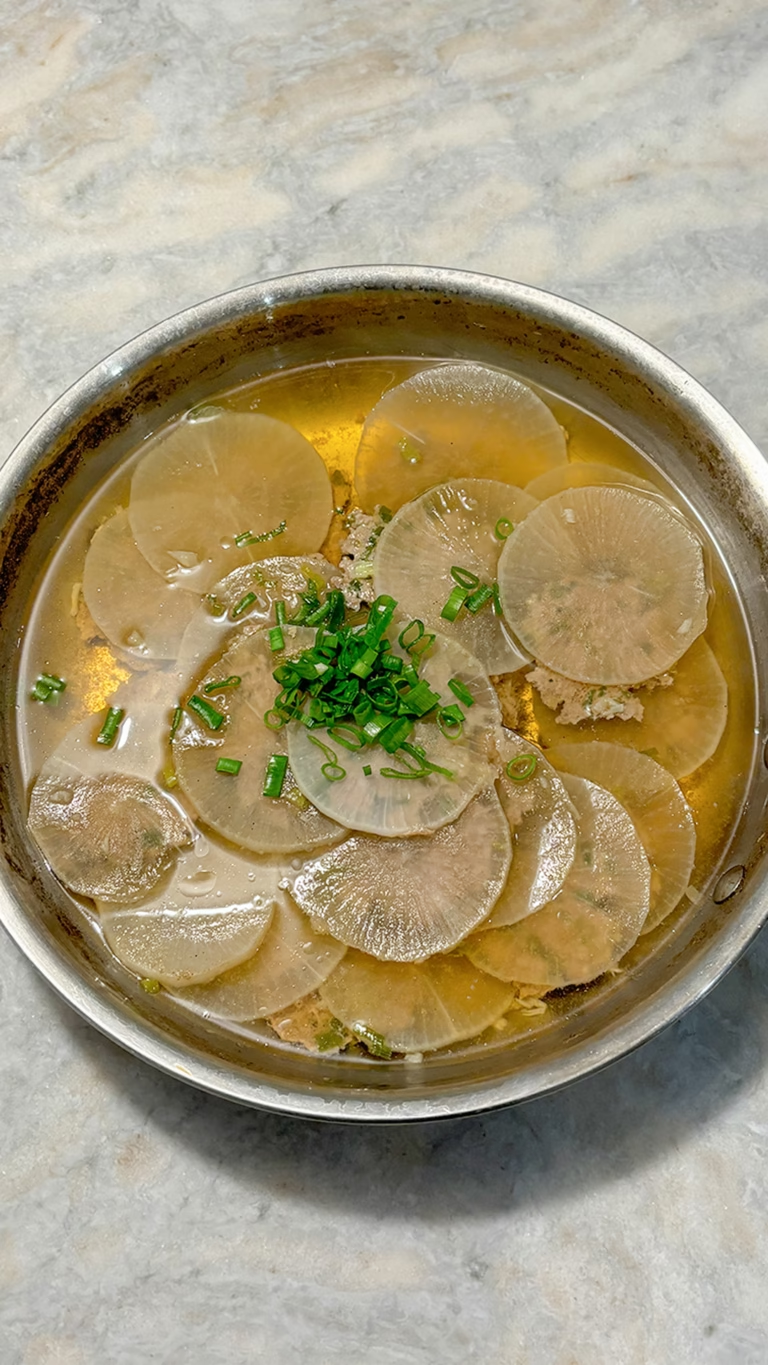
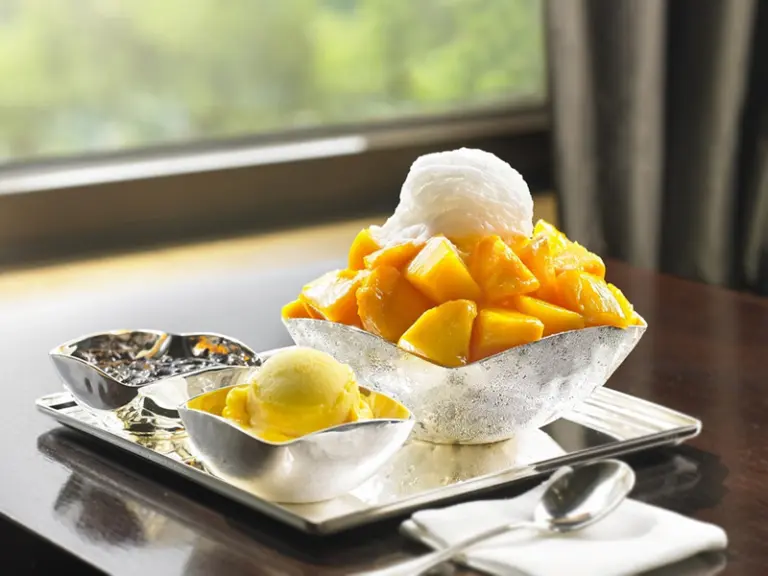

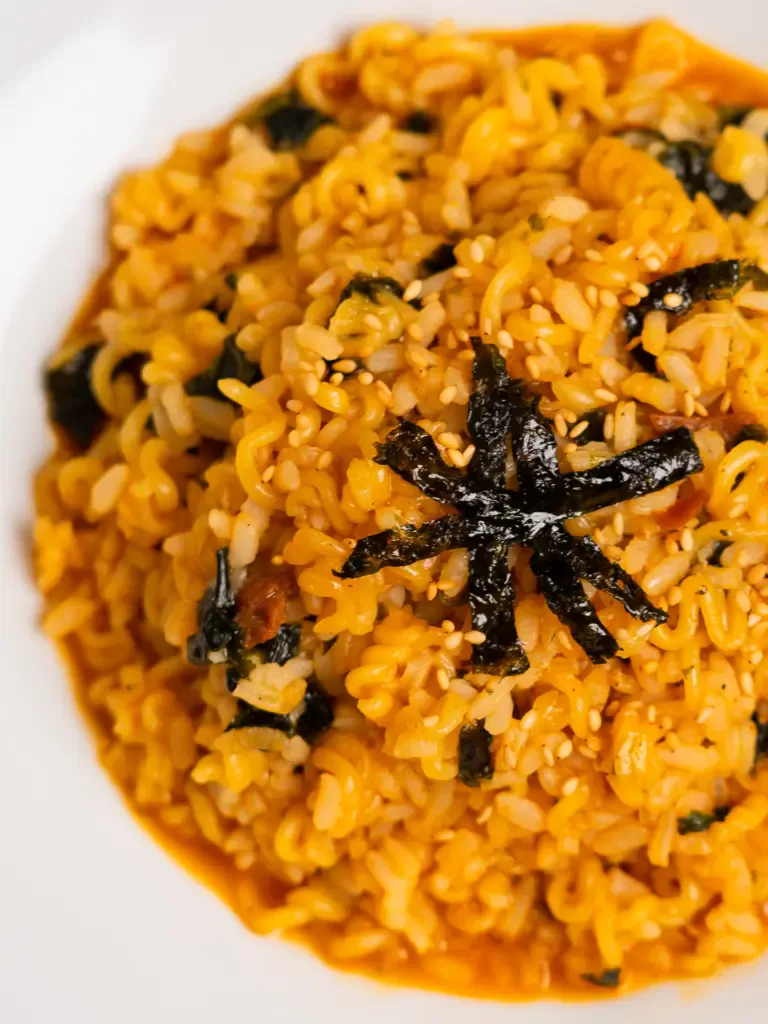
Just made this and WOW — so crispy! Tastes just like the ones I had in Seoul 😍